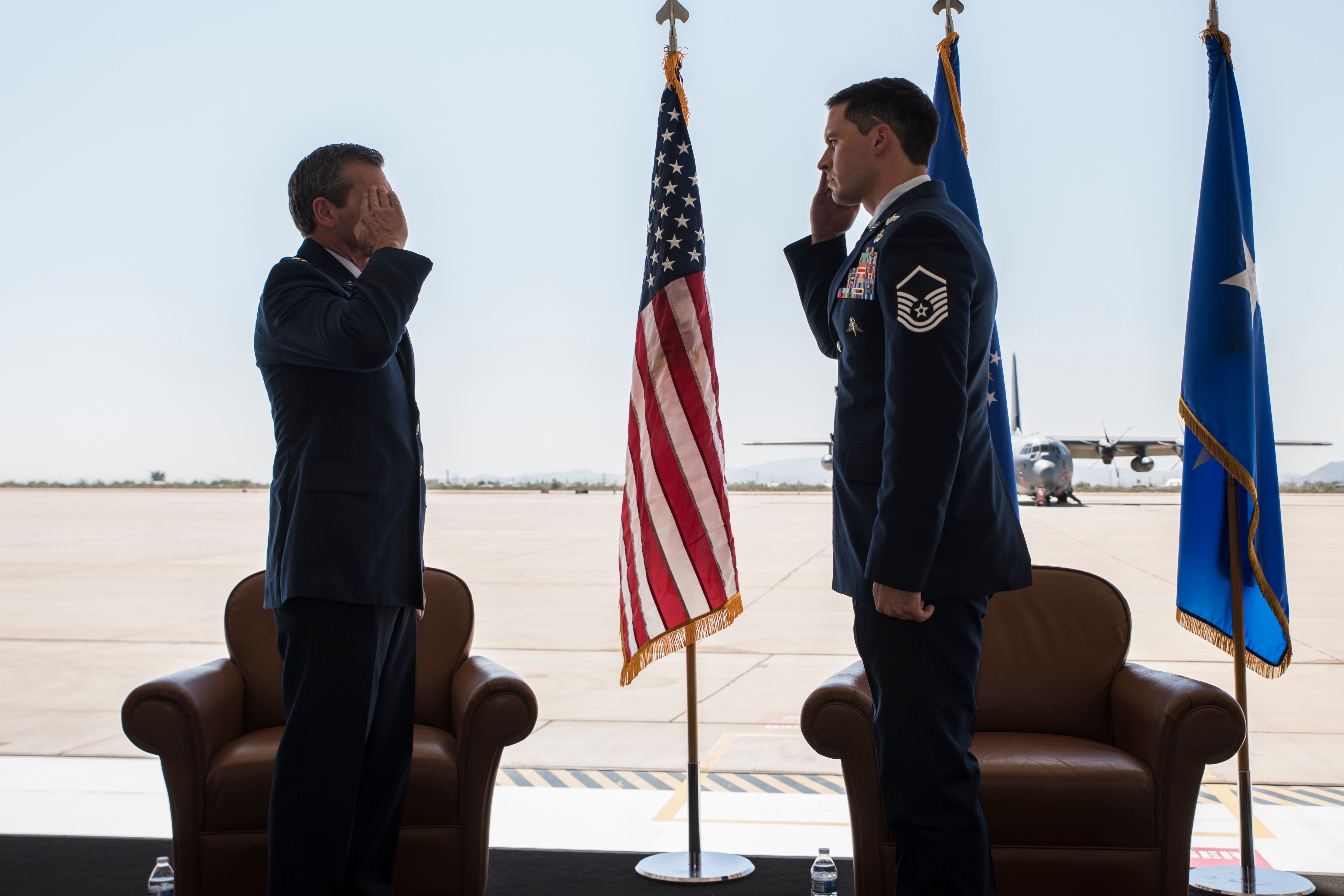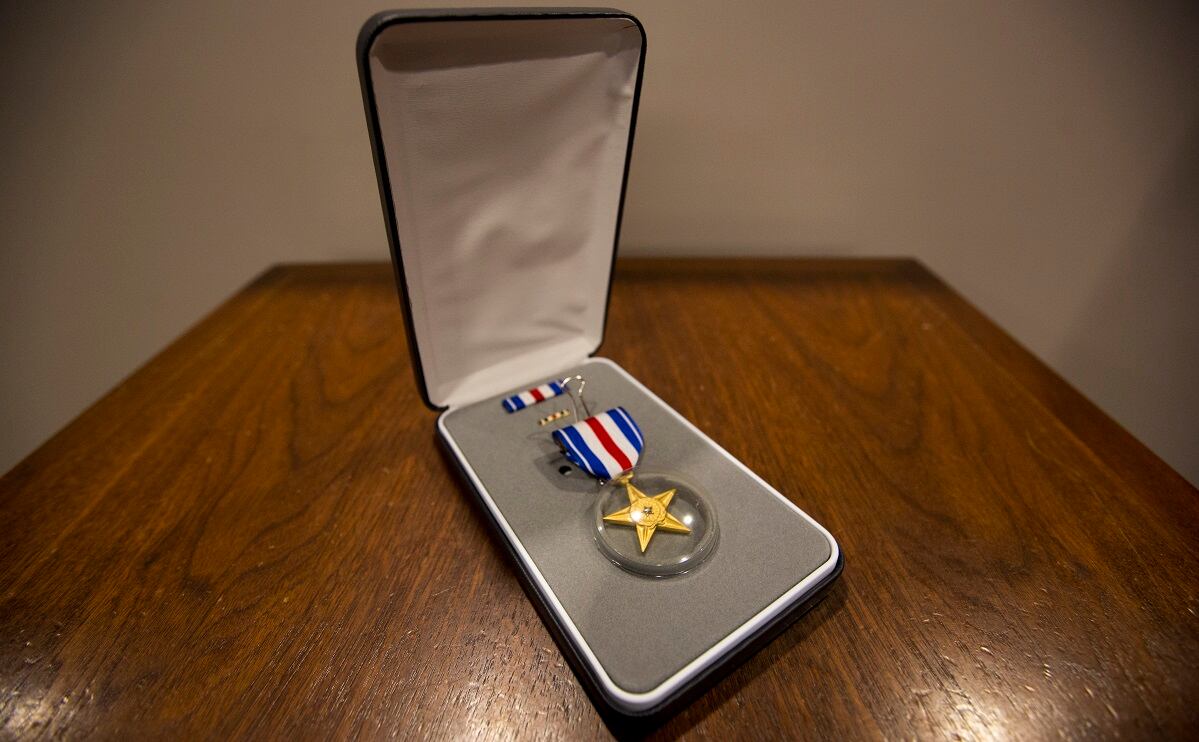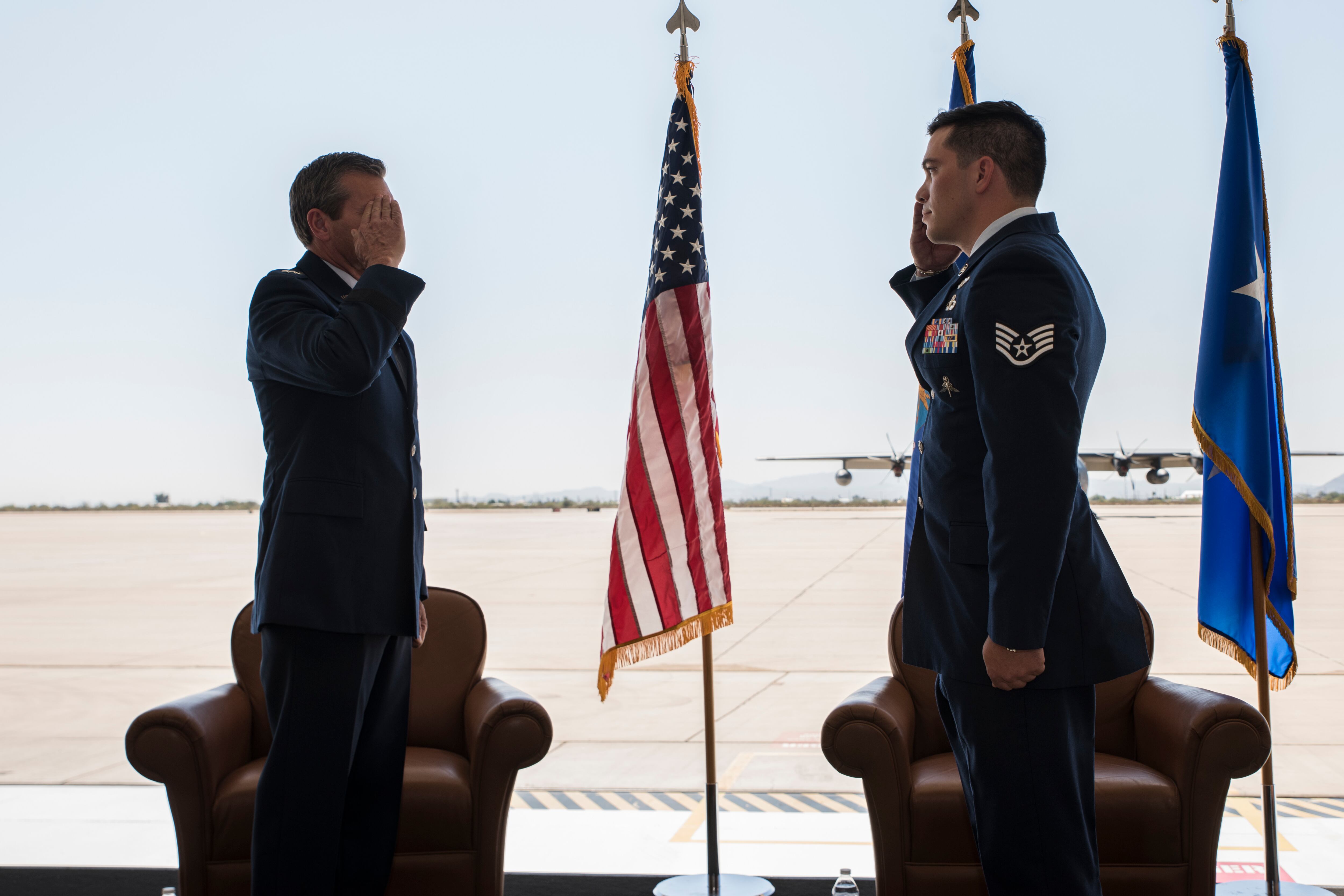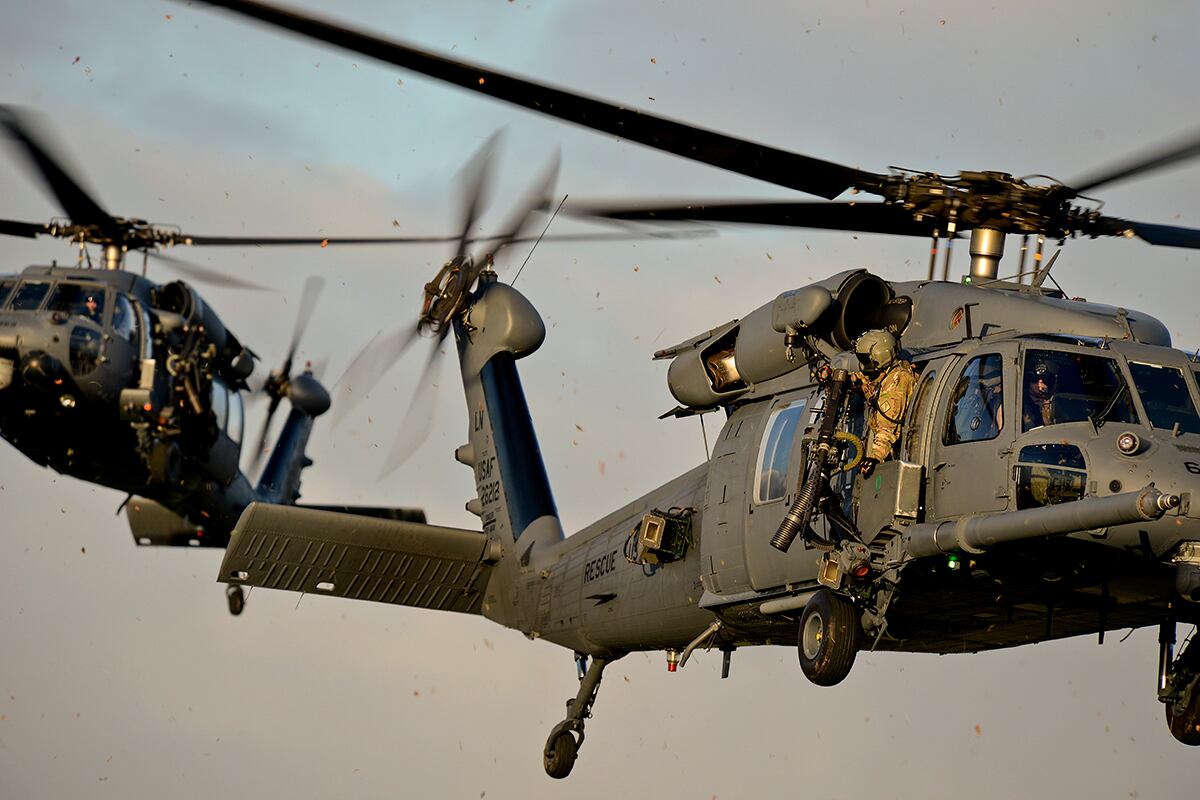Two pararescuemen from Davis-Monthan Air Force Base in Arizona were presented with the Bronze Star with Valor earlier this month for their heroism during separate Afghanistan battles in 2019.
Master Sgt. Adam Fagan and Staff Sgt. Benjamin Brudnicki of the 48th Rescue Squadron received the award, the military’s fourth-highest award for valor in combat, during an Oct. 1 ceremony attended by Maj. Gen. Barry Cornish, commander of the 12th Air Force.
“Master Sgt. Adam and Staff Sgt. Ben’s selfless lifesaving actions while under enemy fire are a testament of their personal courage, not uncommon in the rich history of the [563rd Rescue Group] and greater Air Force combat rescue community,” 563rd commander Col. Peter White said in an Oct. 7 release.
According to a citation provided by the 355th Wing at Davis-Monthan, Fagan was deployed to Kandahar Air Field, Afghanistan, as part of the 64th Expeditionary Rescue Squadron, 455th Air Expeditionary Wing, at the time of his battle in Helmand province on March 24th and 25, 2019. Fagan was working with a Green Beret Operational Detachment Alpha and Afghan special forces on a raid deep in Taliban territory in Sangin, the citation said.

In the Oct. 7 release, Fagan said his team was moving towards a Taliban compound to take out an improvised explosive device manufacturer, when they were ambushed. An improvised explosive device went off, severely wounding an Afghan commando who needed immediate medical help. At the same time, Taliban fighters opened up with heavy and effective small-arms fire from a heavily fortified position.
The Taliban had the American’s Afghan allies pinned down with small-arms and rocket-propelled grenade fire, and several more IED blasts — and reaching the critically wounded Afghan commando was difficult, the citation said.
Fagan took control of the situation “without hesitation and with complete disregard for his own safety,” the citation said. He attacked the Taliban’s fortified position, exposing himself to heavy fire, and laid down covering fire that allowed his team to break loose and move toward the wounded Afghan.
RELATED

When Fagan reached the wounded Afghan, he began administering advanced medical care while directing the Afghan commandos to engage the Taliban. He also set up a casualty evacuation plan, calling in an urgent helicopter medevac to get the wounded Afghan commando out of there.
Fagan began moving the wounded Afghan to the helicopter landing zone, again exposing himself to small arms and RPG fire. As the shooting intensified, the citation said, Fagan directed more suppressing fire to allow the medevac helicopters to land and extract the team.
“Previous training like the Combat Team Leader Course and our spin up at Razor’s Edge with Red Team helped because I knew what I was capable of," Fagan said in the release. "I knew what I was physically able to do, I knew I could treat that guy under fire in the dark and training with other rotary wing platforms gave me the confidence to call in a clear nine line [combat medical evacuation] quickly.”
Fagan’s “exceptionally brave actions and speed of patient delivery” allowed his team to destroy a cache of Taliban weapons, eliminate five Taliban insurgents, and save the life of the Afghan commando, the citation said.
Brudnicki’s battle came nearly a month and a half later, on May 3 and 4, 2019. Brudnicki was also deployed as part of the 64th in Helmand, conducting counter-insurgent operations with another team of Afghan commandos and a Green Beret ODA.
The assault team dismounted their vehicles and moved toward a village that was a Taliban stronghold, under the cover of darkness, the citation said. They breached the first compound and realized the Taliban were getting their weapons ready to fight.
Brudnicki and his team turned the tables on the Taliban, using their own kill holes against them and taking them out with “decisive” small arms fire, the citation said.

It was extremely intense, close-quarters fighting. Brudnicki fought the Taliban at distances of less than five feet with his personal weapons and hand grenades. At one point, the Taliban shot a rocket at them, and though it damaged their cover, it didn’t detonate.
A civilian was wounded in the firefight, the citation said. Brudnicki crossed an open courtyard to get to the civilian — “with complete disregard for his own safety,” the citation said, “and braving effective enemy fire from an adjacent compound” — and started administering medical care.
After stabilizing the civilian, Brudnicki got another call: An Afghan commando had been shot and severely wounded and pinned down by Taliban fire. Once again, Brudnicki crossed the dangerous courtyard and attacked the Taliban, giving the Afghan partners an opening to get their wounded comrade to safety.
Brudnicki then set up a casualty collection point and a plan to treat the wounded. He provided advanced medical care, organized the movement of blood, and set up a medical evacuation plan, the citation said.
The Air Force said Brudnicki’s actions resulted in the deaths of seven enemy fighters, including a Taliban commander, and saved the lives of two coalition partners.
In the release, Brudnicki praised the team he fought.
“It is an honor to be recognized," Brudnicki said. "However, the experience and brotherhood created with my team overseas is the most valuable piece for me. The Air Force best utilizes its special warfare assets when putting them to work in the joint environment, and I am proud to be a part of that.”
The citation said that by their “heroic actions and unselfish dedication to duty,” both Fagan and Brudnicki “reflected great credit” upon themselves and the Air Force.
Stephen Losey is the air warfare reporter for Defense News. He previously covered leadership and personnel issues at Air Force Times, and the Pentagon, special operations and air warfare at Military.com. He has traveled to the Middle East to cover U.S. Air Force operations.





